Cattle farming is notoriously carbon intensive. But new techniques could see cows go from being a problem to part of the climate solution
“Take a smell,” says Tom White, tearing a spade of sun-baked soil from the earth, which – despite the ongoing drought – is swathed in lush chicory, clover and grass. “Everyone who comes round the farm has to smell the soil and give me a word,” he says. “Like a fine wine.”
Wearing a Patagonia cap and chequered shirt, he takes a whiff himself. “Smell’s a nice proxy for soil health because if it smells earthy or rich or sweet, that tells us things are happy down there.” And things certainly seem happy. The soil is rich and fragrant, bound together in large clumps, and fertilised by a herd of grazing cattle.
This is in no small part thanks to White, the in-house soil guru at Yeo Valley. The supplier has been an advocate of organic dairy farming for almost 30 years, managing the land as much for nature as for food. More recently, it’s begun banging the drum for regenerative agriculture: farming and grazing practices that make soil the priority, recognising the food produced is only ever as good as the soil in which it is grown.
The benefits of regenerative techniques range from biodiversity to water health, but for many livestock farmers, including Yeo Valley, one of the main targets is the potential role of cows and sheep in boosting soil carbon sequestration as a means to combat the climate crisis.
Yeo Valley believes the amount of carbon held in the soil below its two farms in Somerset can be increased by 25% over the next 40 years by farming regeneratively, offsetting all the emissions of its belching cows and other processes to make the farms entirely carbon neutral by 2060.
It’s not fast, but soil isn’t built overnight. “Anybody who says that soil and carbon is a short-term process is bulls***ting,” says Yeo Valley owner Tim Mead.
The concept of carbon neutral cows may seemingly conflict with the notion we must eat less meat and dairy to counter climate change. In the largest analysis of global food systems to date, published in Science in 2018, Joseph Poore and Thomas Nemecek found beef to be the most carbon-intensive food source, emitting around 85kg of CO2e for every 1kg of beef compared with 8.4kg of CO2e for poultry and 0.91kg for soy milk.
While parts of the food and farming industry have dismissed the study for its use of global averages, rather than UK production, the error margins of the study show even the most sustainably produced beef is worse for the climate than nearly every other food.
New Zealand plan to tax cow flatulence
Cow farts look set to be taxed for the first time, as New Zealand – a major exporter of livestock and meat – eyes a world-first scheme to tackle agricultural emissions.
Under new government proposals, farmers will be charged for greenhouse gases from livestock’s flatulence, burps and urine from 2025.
The levy would mark “an important step forward in New Zealand’s transition to a low emissions future and delivers on our promise to price agriculture emissions from 2025,” PM Jacinda Ardern said this month.
While details are yet to be confirmed, the tax is already under fire. Federated Farmers national president Andrew Hoggard said it would “rip the guts out of small-town New Zealand” by driving farmers to sell up to overseas buyers. “We didn’t sign up for this,” he added.
It means if carbon neutral cows are to be achieved, there are a lot of emissions to offset. Still, the idea of using cows to help fight climate change is not new.
Since the 1960s, Allan Savory, a Zimbabwean farmer and scientist – and godfather of the regenerative livestock movement – has argued for greater use of animals as a means to battle environmental breakdown and cut carbon emissions.
In a 2013 TedTalk now watched more than 8.5 million times, Savory claimed livestock could help reverse climate change and reduce the amount of carbon in the atmosphere to pre-industrial levels, by storing it in grassland soils.
“I can think of almost nothing that offers more hope for our planet, for your children, and their children, and all of humanity,” he told the crowd.
Today, this concept is gaining the attention of major food companies as they pursue net zero goals. Nestlé estimates improving carbon storage in grasslands can contribute 15% of its 2030 reduction targets for dairy and meat ingredients. Meanwhile, Wyke Farms has launched the UK’s first carbon neutral cheddar, which it claims has used carbon sequestration and reduced energy use, among other methods, to help offset the emissions of its cows.
Read more:
-
What can industry expect from Thérèse Coffey at Defra?
-
Will supermarket net-zero plans survive the cost of living crisis?
-
Meadow Foods sets out ambition to lead decarbonisation of dairy industry
-
As energy prices soar, is it time supermarkets went off-grid?
Even McDonald’s, one of the world’s biggest buyers of beef, speaks of supporting regenerative agriculture initiatives that can “improve soil health and climate resiliency while sequestering carbon”.
At the heart of Savory’s approach is mimicking the natural grazing patterns of livestock so often abandoned in modern agriculture. This typically involves mob grazing, a practice in which livestock is rotated in short bursts through small patches of high grass. This ensures most plants in that patch are either eaten or trampled before getting a long rest period.
Contrary to modern grazing systems that are shown to degrade biodiversity and soil health, mob grazing’s quick and intense rotation is said to evenly fertilise the ground, boost the health of the plants, and increase the depth of their roots. Healthy plants mean higher levels of photosynthesis and therefore higher levels of carbon dioxide drawn from the atmosphere. In turn, this carbon is ‘captured’ either in the plant’s cells as it grows or in the surrounding soil.
This premise is based on soil being a vital carbon sink, holding more than four times as much carbon as plants and animals (see right), and three times the amount in the atmosphere. Soil can also absorb up to 30% of current greenhouse gas emissions.
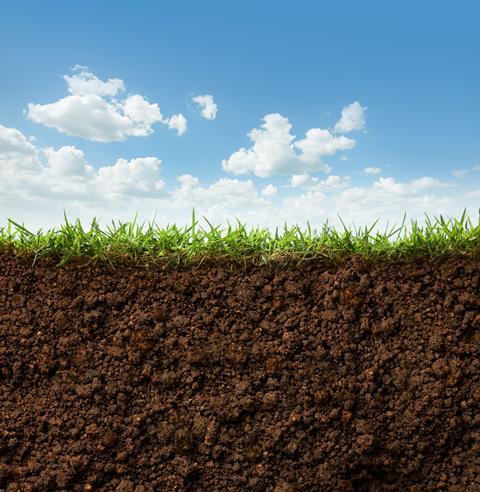
Soil management
However, its ability to sequester carbon depends on how it’s managed. The role of animals can be particularly key on grasslands, which make up 40% of the earth’s surface as well as a large portion of the UK. By grazing in short sharp bursts, it is thought plants form deeper roots, taking carbon further down into the soil where there is more opportunity for storage.
“Natural grazing is a keystone element of grasslands,” says Francesca Cotrufo, a professor in soil & crop sciences at Colorado State University. “It’s one of the things that maintains the biodiversity, maintains the productivity, and maintains the push of carbon down into the deep roots.”
The huge volumes of carbon stored in soil have become a basis for livestock advocates and lobby groups to argue that, rather than cutting production and consumption of meat and dairy, the sector instead must grow. “Animals are not the problem,” says Seth Itzkan, co-founder of Soil4Climate. “In most cases, there aren’t enough animals. We need more, maybe two or three times more animals,” he argues.
Yet glance through peer-reviewed journals on the topic, and the evidence is decidedly patchy. While there are cases of regenerative farms boosting carbon stocks of soils over a period of years, the studies are almost always small-scale, with no evidence of their scalability and applicability across larger areas.
One of the few meta-analyses of studies, carried out in 2020, concluded “after a half-century of research, the results are inconclusive. The most that can be said is that ecological results vary depending on context”. And that’s not the only voice of scepticism.
According to Pete Smith, a professor of soils and global change at University of Aberdeen, a number of farmers have misinterpreted the science when it comes to cows and carbon. “A mantra I hear time and time again is: ‘livestock aren’t a problem because they sequester carbon in the soil’. And that’s simply not true. It’s just mischaracterising the science.”
The problem, explains Smith, who has led the writing of IPCC chapters on mitigation for two previous climate change reports, is that soil has a crucial limitation in its ability to sequester carbon and contribute towards rearing ‘carbon neutral cows’.
Put simply, all soil has a saturation point, a maximum capacity of carbon it can hold. It means the healthier the soil, the closer to saturation it is – and, therefore, the less potential it has to absorb more carbon.
In somewhere like the UK – particularly in the West Country, where grasslands are typically well-managed and receive plenty of rain – soil is already healthy and carbon-dense. “The upside of that is our grasslands contain a lot of carbon, so it’s an important stock and we don’t want to go ploughing it up,” Smith says.
“The downside of it – from the point of view of carbon neutral beef and dairy – is that you can’t really increase the carbon that much more, because they’re already close to saturation point.” The exceptions, he adds, are the overgrazed uplands, but those tend to be for sheep farming rather than cattle farming.
It’s a point with serious implications for the future sustainability of British agriculture. The NFU has a goal of net zero greenhouse gas emissions across the whole of agriculture in England and Wales by 2040. Greenhouse gas removal through “photosynthesis and carbon capture” is a key part of achieving this.
Not only that, but the government’s environment land management scheme is potentially due to pay farmers based on protecting or improving soil health and carbon sequestration. So it could have consequences for their financial profitability, too.
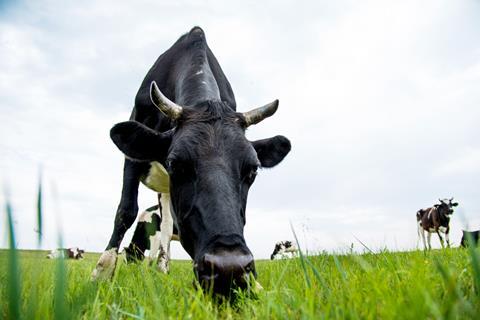
Turning to trees
There is still hope, though, for farms with healthy, carbon-filled soil. Silvopasture, the technique of integrating trees into livestock pasture, remains a relatively infrequent farming method in the UK but shows high potential for carbon sequestration.
While studies in the UK are limited, it has consistently been found to sequester more carbon than traditional pasture, as well as reducing flooding, improving animal welfare and boosting biodiversity.
The benefit of trees are not only that they lock more carbon into their large physical structures, but their roots travel much deeper into the soil than grasses and plants, potentially opening up new realms for carbon to be stored at deeper levels.
For Smith, it holds much greater potential than relying on grazing to cut carbon. “Using soils as the ‘get out of jail free’ card for beef and dairy isn’t really tenable. It doesn’t wash; the numbers don’t add up,” he says. “But other forms of carbon sequestration – silvopasture, creating more hedgerows – all those things can help. So, it’s not inconceivable that you could have a carbon neutral beef, but you’re not going to get it through the soil.”
In the UK, the impact and opportunities of different farming methods on improving soil health are set to become clearer. The Farm Carbon Toolkit was set up over a decade ago to help farmers understand the impact of greenhouse gas emissions in agriculture. It has now been collecting data on soil carbon levels for more than four years.
“Increasingly, that information will be available so we can start to do proper trend analysis of what the impacts are,” says Liz Bowles, the organisation’s CEO.
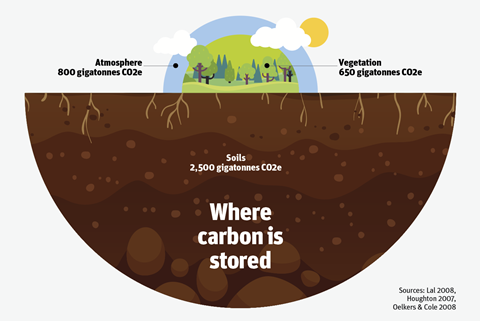
International studies
In the US, meanwhile, where soils are typically more degraded than in the UK, a number of local studies have already taken place on farms. The results are often impressive but still fail to convince many observers that carbon neutral cows are a genuine possibility.
White Oak Pastures is a 3,000-acre farm in Georgia that turned to rotational, regenerative agriculture 25 years ago. It uses organic no-till systems and has long been vocal about the beneficial effects on its local ecosystems. In 2019, this culminated with White Oak Pastures promoting the “carbon negative footprint” of its beef products – a moment celebrated throughout the regenerative grazing community.
However, a peer-reviewed life cycle analysis of the farm one year later threw doubt on the claims. The study, carried out by a group of eight scientists, found that rotating cattle, chickens and pigs on pastures sequestered enough carbon in the soil to reduce net carbon emissions by 80%, rather than neutralising them.
Granted, that’s still a major improvement, but researchers pointed to another key problem: it required 2.5 times more land and cost 70% more to produce the same amount of food as standard systems.
The study highlights the complexity that emerges when trying to determine what farming systems to pursue. Low-intensity, pasture-fed livestock can improve soil health. The method can also boost biodiversity, welfare and human nutrition. But, as the study found, this often means more land use, smaller yields and higher prices.
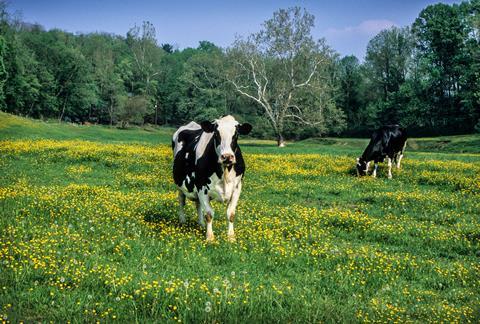
By contrast, intensive feedlot animals are often less carbon intensive than pasture-raised animals. Some studies find feedlot cattle release up to 40% less emissions than grazed cattle because they grow faster and produce more meat.
The problems arise when considering what they’re fed. Two-fifths of the UK’s arable land is used to grow crops to feed animals, according to calculations by the WWF, and there is now a widespread recognition this figure should be cut.
The Sustainable Food Trust estimates if grain production was halved in favour of more mixed organic farming and growing of peas and beans, the UK could maintain or even boost its self-sufficiency while allowing for 2.5 million hectares of extra tree planting and nature recovery.
There are many factors to weigh up. As the researchers at White Oak Pastures concluded: “Should society prioritise an input-intensive [conventional commodity] system that produces more food from a smaller yet degrading land base? Or, alternatively, should systems such as [multispecies pasture rotation] that produce less food on a larger, but more ecologically functional landscape, be more highly prioritised?”
It highlights the carbon impact of cows is just one factor that feeds into many others. The debate is ultimately as much over values and what we wish to prioritise as a society, as it is a question of science.







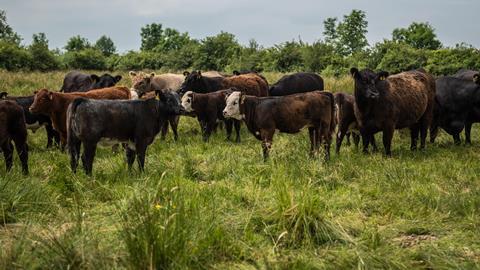

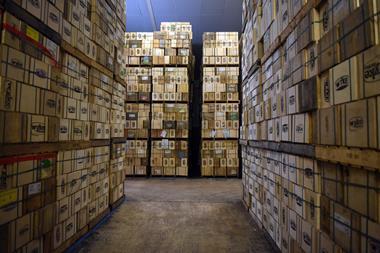
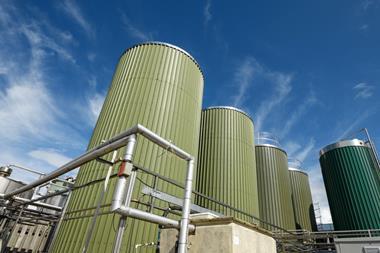
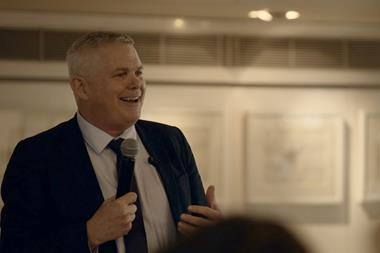
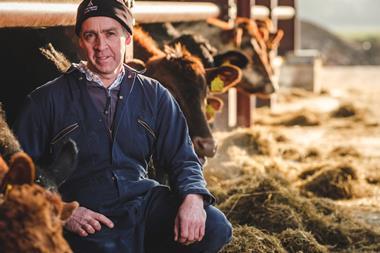
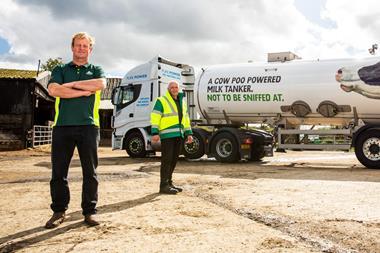






No comments yet